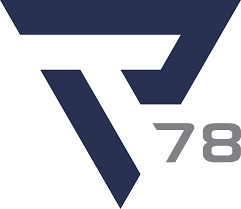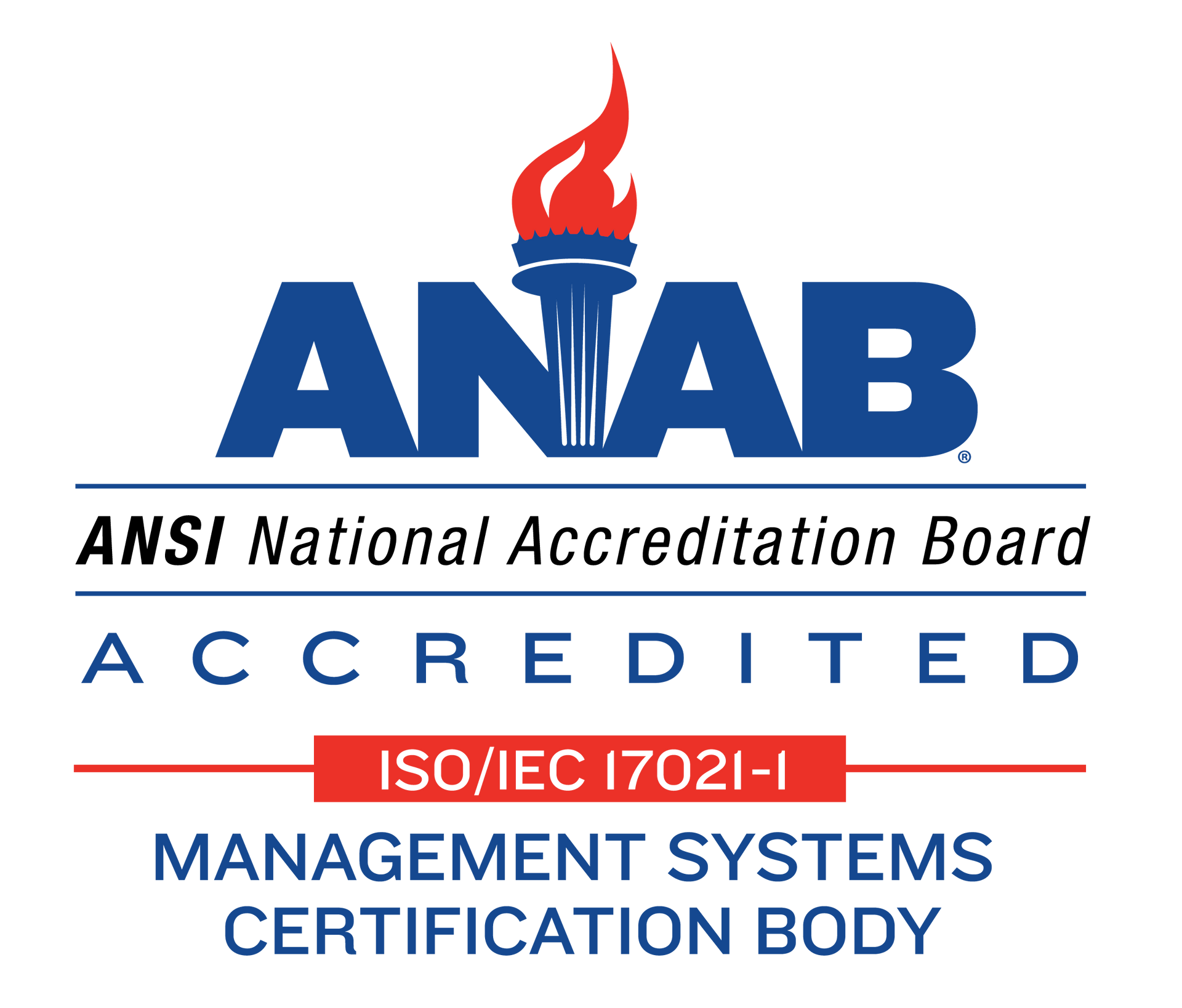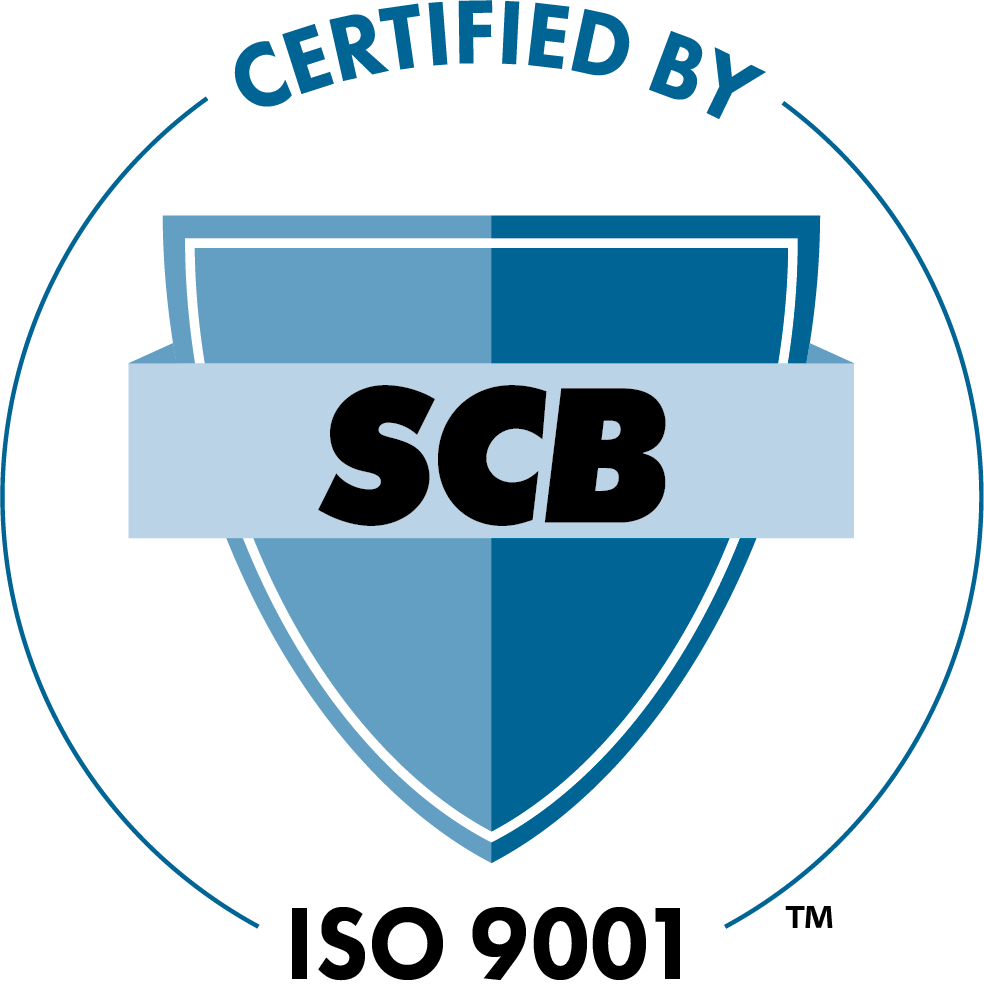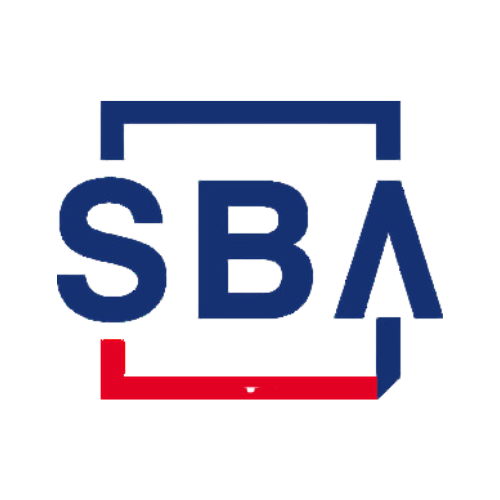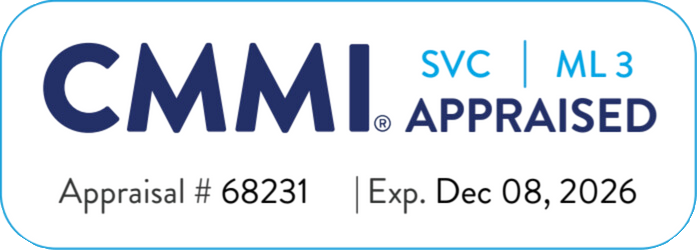Platinum Insights
Industries of the Future are now Industries of Today. We help you establish flexible governance models to manage change, risk, and opportunity across your organization.
CEO Unplugged: The Platinum Effect Newsletter

Leadership is about making others better as a result of our presence in a way that lasts in our absence. - Frances Frei, Professor – Harvard Business School For the past three weeks, I have been away for some formal executive education. The combination of case review with our professors, individual and team study from early mornings to late nights made for an intense but incredibly rewarding experience. An added (and arguably one of the more important) benefit was the opportunity to discuss challenges and strategies with contemporaries from around the world in an academic setting. It was a fascinating 21 days that accelerated my preparation for life on the horizon. As I was preparing to head up to Boston, I found myself in a bit of a paradox. On one hand, I was eager to dive into my upcoming learning experience, not fully knowing what to expect but excited about the challenge. On the other, I was acutely aware that for the first time in a while, I would not be available to run the company. This absence wasn't just about me stepping away; it was going to be our litmus test for where we are as an enterprise. The question lingered—could the team maintain the same level of excellence without my direct involvement? In fact, in our opening session, Deepak Malhotra said to us all, “Well, if you can’t leave your company without it falling apart, it says something about you.” He then added, “If you can leave and they don’t even miss you, well, that says something too! In either case, you’re going to find out.” It turns out, the Platinum team didn't just manage; they thrived. They solved problems, maintained operational rigor, and delivered topline results for our customers, all without missing a beat. This experience was a nice reminder that leadership isn't about constant oversight but about how you empower people, build their trust, and provide them with opportunities to meet new challenges. Reflecting on the actions that drove their performance, some key behaviors stood out: An Embrace of Our Cultural Alignment: The team exhibited a deep respect for one another and a genuine willingness to collaborate. This shared sense of purpose has been the foundation for our success, as everyone works towards the same goals with a clear understanding of our mission and values. Understanding Our Systems and Processes: While we might have a bit of band-aid or duct tape holding together a few spots, we’ve generally built a solid framework that supports our operations and allows us to punch well above our weight class. This focus on processes has been a core differentiator that sets us apart from the competition. Redundancy and Cross-Training: This has been pivotal to our resilience. The team stepped up beyond their primary roles and learned to become accountable for responsibilities outside of their core operating functions before they really needed to. Lastly, we trust each other, and with that trust comes the responsibility of living with—and learning from—the decisions we all make. One of our aspirations is to continuously improve upon our decentralized decision-making to ensure our success is never reliant on a single individual, even me. Going back to Professor Frei, she emphasized many of these points and underscored that team development is as much about creating experiences and developing the ability to handle different situations through a mix of preparation, empowerment, and learning. That said, solving the puzzle of Cultural Alignment and Operational Execution is tougher than figuring out any Rubik’s cube—because the answer can vary by organization. What’s clear is that our success hinges on more than just one person’s contributions, and we should celebrate the opportunity to build a culture where collaboration, trust, and adaptability are the norm. This, my Platinum Effect Crew, is the power of a unified team that embraces shared goals and is committed and accountable to each other—not just for their roles, but for the success of the entire organization. I know many of you can relate—make sure you brag about your team and share these principles with your community. We’ll be better for it. I went a little long today, but I want to extend my deepest gratitude to Brett Rome , Shimul Ray , Morgan Ainslie , Joel Shuler, CISSP, CEH , and the entire Platinum team for showing the best of leadership and embodying the values that make us who we are. You’re not just maintaining excellence; you’re setting the stage for an even brighter future.

Vision without action is merely a dream. Action without vision just passes the time. Vision with action can change the world.” — Joel A. Barker Joel Barker, a futurist known for his work on paradigm shifts, reminds us that actively executing our decisions shape our opportunity for success. When we challenge the status quo and embrace change, we can turn visions into realities. As we celebrate #FourYearsOfPlatinum , this is a message that our team resonates deeply with. We started with a bold vision—to create 1,000 jobs, build leaders, and deliver transformative outcomes—but we understood that vision alone isn’t enough. We committed to a series of integrated choices and defined a path that replaced blind ambition with actively taking steps to achieve our goals. Our journey has been shaped not only by our achievements but by the experiences we've learned from along the way. Each challenge faced, problem solved, and every solution delivered has taught us valuable lessons about resilience, adaptability, and the power of staying true to our mission. Our path to ‘Tomorrow’ started with an idea to become more than just a service provider; we aimed to build a company that would overwhelm our customers with success through consistent execution and strategic problem-solving. We’ve grown into an organization that doesn’t shy away from challenges, using our operational depth and the expertise to turn complex problems into opportunities. Our focus has always been on action—creating a talent hub where everyone continuously pushes boundaries, exceeds expectations, and drives meaningful change. The path we’ve chosen—to invest in our people, make disciplined decisions, and relentlessly pursue impactful results—reflects the power of combining vision with action, transforming ambition into reality. For many of us our aspirations are personal, consequential, and invoke an internal drive that propels us to achieve those goals. These ambitions are deeply rooted visions that guide our actions and shape our decisions daily. Embrace your vision. Take meaningful steps that you can measure. Celebrate your Tomorrow. Yesterday, we envisioned tomorrow’s future— a future built on dreams of impact, leadership, and meaningful change. Today, we execute with intention, putting in the hard work, making choices, and embracing challenges that test our resolve. To realize these outcomes, learn from every experience, celebrate small wins, and refine your strategies to stay on course. Relentlessly commitment to act in the present to transform your dreams into tangible outcomes. Tomorrow’s achievements won’t be accidents; you will celebrate today’s dedicated effort and yesterday’s courage to dream big— proof that every step forward, no matter how small, builds the bridge to the future you could have never imagined.

I’ve got this goal to read all 100 of the New York Times best books of the 21st century… not in any particular timeframe or order, but since it is a well curated list, that’s one less thing that I have to figure out. Recently I finished When Breath Becomes Air by Paul Kalanithi. Published after his death, Mr. Kalanithi chronicled his rise to being one of the top neurosurgeon residents in the country as his life was tragically cut short, succumbing to cancer. There were many poignant pieces to this this read but I can sum it up as a powerful reminder of how values shape our lives, both in the moments we can predict and especially the ones we can’t. In our leadership journey, we have all had moments of brilliance — the big wins, the breakthroughs, the celebrated achievements. While it’s natural to celebrate standout performances, the real win is whether we can establish norms that are consistent, drive collaboration, and make our teams better. Focusing on behaviors for a moment… can we craft a legacy that transforms ideals into something more tangible? Can we demonstrate actions that traverse our fleeting accomplishments and translate them to enduring business value. In Kalanithi’s memoir, he reminds us that life is often shorter than we think, and we rarely have the luxury of time to achieve all we hope for. This urgency applies in business too. We assume we have time on our side – annual strategic planning activities, 3- and 5-year outlooks, forecasted revenues… what did I miss? We have the authority and the ability, but usually fall short on the ‘will’ and the ‘motivation’ to create a culture of excellence based on values that will outlast us. When we elevate our excellence, we shape business opportunities according to a core ethos that attracts talent to deliver quality outcomes. I don’t know about you—but this is something I’d be proud to leave behind. Whether we realize it or not, our legacy is being written everyday whether we actively curate a behavior-based narrative or let it be externally shaped by others. None of this is new. Respected works, from Jim Collins' Built to Last to Simon Sinek's The Infinite Game , emphasize that organizations thriving over the long term are those that embed their core values into every aspect of their operations. It is our constant reminder that values are not just words on a wall; they are the foundation of consistent, sustainable performance. To transform isolated successes into sustained performance, we need to shift organizations from just celebrating sporadic wins to fostering consistent behaviors. This means actively reinforcing core values, recognizing those who embody them, and aligning daily actions with a shared purpose. At Platinum Technologies , we aspire to these three: Thoughtfulness; Time Management; Bias For Action. I’m proud to say that we start every all-hands meeting by celebrating individuals who embody those values. It is part of the intentional culture we have created that has become the bedrock of our performance. As I completed the final chapter and then epilogue written by his wife (I won’t spoil the read), I can tell you this book hit differently. This past week, on more than a few occasions I’ve paused to think about the folks who count on me – not just professionally, but in life. The unanswered question still floats… Am I creating change that will endure if I’m not here in a few years, months, days… tomorrow? I really don’t know. But I’m more conscious and deliberate in trying to achieve that goal. We have the power to impact the lives of others. So, here’s my challenge: think about the values you’re living today and posit the internal question: Do those values help build the future you want, and does that future serve others as much as yourself? I not, are you willing to change to make those values matter more?

On more than one occasion, I used to go to one of my mentors with a ‘really great idea,’ and to his credit—he’d pause to give me advice on how the idea could be additive to the business. Maybe on the third or fourth time, the ‘pause’ was different. It could have been the slow removal of his glasses or maybe I just caught him at the wrong time, but his response got my attention: “You know, Jermon, ideas are like a________s, everybody has one. You’ve got to pick one of these things and try to turn it into something—otherwise, you’re wasting time and not generating benefit for anyone.” Cue: chest sinking in and heart hitting the stomach. “Got it, Boss.” Among the many lessons I’ve learned over the course of my career, this one resonates at the top on most days. I wouldn’t put myself in the ‘Idea Fairy’ category, but I have definitely learned that while innovative thoughts and refreshing ideas matter, it’s the discipline of picking the right one or two that you believe in and driving them to fruition. The reality is that organizations recognize the brilliance in results more than the brilliance in ideas. How many times have you heard some version of this: “You know, that was my idea. ______ took my idea and ran with it.” It’s never my place to question the person on that statement, but I’m always thoughtful about whether they made the effort to deliver something or if the consternation is more about someone else deciding to do the work instead of them. Like my mentor, I (and many of you) am in a position to influence better behaviors that translate into results. In my view, we have a responsibility to encourage the robust thoughtfulness that comes with trying to differentiate how we think about providing customer value. Ideas remain crucial, as they are the fuel for differentiation. The good ones take effort and imagination that, frankly, you just can’t teach. However, if we stop there, at best, we have a ‘you won’t believe it’ story at a cocktail party—and guess what, they probably won’t. Paraphrasing Peter Drucker’s emphasis that unless they degenerate into hard work, ideas and plans are meaningless. As I stated earlier, leaders have the power to affect this. Beyond encouraging our teammates to share innovations, we need to create spaces where these ideas are debated, matured, and adjudicated—creating a process that celebrates ideas but rewards results, emphasizing the necessity of turning intentions into actionable outcomes. Realizing our potential comes down to a commitment to action. It’s easy to be captivated by new concepts, but our true challenge—and reward—comes from the disciplined effort to turn those concepts into reality. In our leadership roles, we need to inspire creative thinking but also build an environment where those ideas are rigorously tested, refined, and ultimately implemented. Building a culture of continuous improvement isn’t simply about evolving our ideas; it’s about fostering a culture that prioritizes action and accountability, ensuring that each idea has the opportunity to become more than just a fleeting thought but a driving force for real, lasting impact. As you reflect on your own leadership practices, ask yourself: Are you creating the conditions where ideas can truly flourish through action? Are you equipping your team not just to think creatively but to execute effectively? Our journey continues. How can we better align our efforts with the principle that while ideas may ignite the spark, the disciplined pursuit of results is the ultimate reward? I’d love to hear your thoughts.

"We are what we repeatedly do. Excellence, then, is not an act, but a habit." - Aristotle For those who don’t know me, I’m big on learning agility – being able to understand, translate, and apply a new concept for a specific purpose towards a desired outcome. Throughout my career this characteristic has come in handy, even if the byproduct is that I’m also a pretty good source of ‘random, why do I need to know that?’ information. Be that as it may, I have always placed a premium on personal mastery, and believe that if you are going to be a source of information—you must first be informed. Over time that intellectual curiosity morphed into a responsibility where people began to depend on me for answers and trust I was giving the ‘right’ one. And of course it gets harder the broader your reach. Whether fair or unfair, but it doesn’t really matter. What matters more is whether you can implement a scaling framework that builds the next generation of autonomous teams that can make these ‘right’ decisions (which might be different than yours) you can live with? Most leaders agree that for organizations to experience extreme success you need teams that align to the goals and culture of the entity, however, can operate independently to achieve these goals. It’s an elusive thing to build. We go out of our way to provide the training classes, professional experiences, and lessons learned to make all that happen. I’d argue though, that these building blocks are not enough. We are developing mental and technical acuity, which is a good thing – but are we positioning these individuals for the next level where you have confidence they can operate with autonomy? What we have done to this point, and this is where most of us stop, amounts to practice. We feel that we have put our future leaders in a position to apply what they have learned to get something right. This is a good foundation for skill development, and one where they can focus is on learning and refining techniques. If they are motivated, they will explore, repeat, and course correct to help them understand the nuances of a task and achieve initial proficiency. This is all critical, but only foundational… we need to shift are focus to a deeper level. To build excellent teams that have the competence and aspiration to execute flawlessly and transform organizations, our focus should go beyond providing tools. As leaders we need to implement systems that push beyond repetition and instill discipline, achieving a level of mastery where teams can perform tasks correctly every time, almost instinctively. This is where I draw the distinction between Practicing and Training. Training involves rigorous, repeated application of skills until they become second nature. It is about developing the muscle memory and mental fortitude to perform flawlessly, even under pressure. Practice lays the groundwork by helping us get things right, while training ensures we can’t get them wrong, even under the most challenging circumstances. We should aim for mastery in our domains (Practice), but the real challenge lies in moving from mastery to execution with excellence (Training). Using the United States military as an example, service members spend up 50% training for scenarios where they will need to assess situations accurately and make quick, decisive decisions. As we look to channel more responsibilities towards our team members, remember that providing the tools and equipment is just the first part of our job. We need to instill discipline coupled with a continuous feedback loop of opportunity that gets them comfortable with rapid decision making in various situations. that gets our team comfortable with challenges. Let’s get introspective: How can we incorporate the discipline of training into their daily routines to enhance your team’s leadership capabilities? Reflect on your current approach and consider what steps you can take for them to lead with confidence.

If there were any doubts before, summertime is here! Record-breaking heat, family vacation schedules conflicting left and right with our professional duties, and for those in my industry – the busiest time of the contracting season… the closing quarter of the Federal Government’s Fiscal Year. For me, the summer months are also that time of year when I do all my annual health checkups as it seems like the only time, I can get them all done. Even then, I’m always good for at least one or two reschedules because some other commitment took priority. The verdict is in: nothing adverse or any watch items of concern, thank goodness. But… nothing exceptional either. No high fives from the doctors saying, “You’ve got the fitness of a 25-year-old,” or “Wow, your health is amazing.” To be clear, it’s not that I expected it – I do enough to maintain a relatively healthy lifestyle, but there’s no kidding myself that I am overperforming in this area because my belt buckle tells me that I’m not! In a recent quiet moment, I asked myself, why is it that I set priorities for just about everything, but I let the focus of my health meander? Since “I don’t know” is rarely a good enough answer, the more I reflected on this thought—the clearer the answer became… I really hadn’t tied my personal well-being to a greater purpose. We all have our motivators, and one of mine is that I spend my time on efforts that yield more for others. This is a common trait for those who understand the gravity of increased responsibility – people depend on you to make the right call. That calculating factor weighs heavily in our decision-making, and it is often where we direct our efforts. I know this crew can appreciate this because what differentiates us is our collective wisdom and experience for which others are reliant, and we apply these qualities toward our leadership styles. This sets us apart from most: 1. Our emotional and business acumen are always on display, and we are decisive when we have to be. 2. In client engagements, we are empathetic to external and opposing points of view to understand how we can make a difference. But to be able to call the ‘balls and strikes’ (tips hat to the All-Star game earlier this week), you kinda have to be around. Which also means you need to be positioned to bring your best (and healthy) self to that decision-making table. I’d say it is time that we refocus some of that wisdom and experience inward on our personal well-being. In that context: listening to our bodies, understanding our limits, and deciding to make active and informed choices about our health and well-being. Just as we leverage our professional expertise to drive success, we must use our personal insights to prioritize our health. This is not just about personal goals; rather its foundational to our professional effectiveness. When we are at our best physically and mentally, we can make better decisions, lead with clarity, and inspire those around us. It’s a necessity that, like any other important thing, requires us to commit. Again, remember that people depend on you. This one is going to require me to fire off some new synapses and dedicate new energy, but in the words of John Maxwell, "To lead others, you must first lead yourself." My motivation is about those who depend on me professionally and personally—and knowing that I have got to purposely equip myself to take better care so I can try to provide opportunities for others. What's yours? -- whatever it is, make it meaningful and with purpose so that we an be in this for the long haul together. So, schedule that checkup, make healthier decisions, and if you need a little vanity – borrow my goal to fit into the jeans you wore in high school. Cheers to living to 100 years old 😊.

In America, on July 4th, we get to reflect on and celebrate the birth of our nation. Oversimplified, that foundational step where we declaratively broke from our past began the journey towards our stated goals for a better future, codified in the Constitution eleven years later… “to form a more perfect Union.” The Declaration of Independence was a bold assertion of our nation's intent to create a society based on liberty, equality, and justice. It marked the beginning of an ongoing journey—a journey that requires active participation and unwavering commitment. This got me thinking and I asked myself: Am I merely a work in progress, or am I actively working to progress? We all had to do that one play when we were kids. Unfortunately for me, I was not a Tree, but instead Benjamin Franklin—and my lines were to recite the Preamble of The Constitution. I only remember this because 1. I had to wear a barrister wig and 2. I was so nervous! In our practices, my teacher kept the pressure on that I needed to emphasize “to form a more perfect Union” when it came to showtime. Those lines were the hardest 52 words of my life. The good news was I didn’t forget my lines, and the better news was this was the last time I ever had to perform. However, after all these years, those lines – all of them – stuck with me as a reminder that as changemakers our work is never done. For me that underscores that development is an ongoing AND active process that demands continuous effort, dedication, and sacrifice. Throughout our history, progress has been achieved by those who actively sought change, sometimes at great personal cost. Those outcomes were driven by individuals who embodied the spirit of service and sacrifice, and showed up with (and on) purpose, guided by a vision of a better future. They were not content to be passive observers of history; they were determined to shape it. We can all be bellwethers of change in our personal and professional lives, leading by example with actions which remind us that leadership is about the willingness to serve and make a difference. So… how are we showing up today? Are we actively working to progress, or are we passively drifting along? Are we aligning our efforts with our values or are the enticements of monetary rewards and professional achievements absent the thought for a greater good? My son turns 11 in a week, but tomorrow we get to talk about how important an 11-year journey can be and what type of future he wants to shape for his friends and his community as an active participant in our society. Yeah, I know… tough dad. He’ll be ok, we’ll still do fireworks later. Getting off the stage now(I do that well); fight inertia and commit to the progress of a better, if not more perfect society where we rededicate some part of our lives to being active citizens committed to service and progress. Show up with purpose, and if you don’t work tirelessly—at least sweat a little bit, and align your work with values that inspire others to join you. Happy 4th Everyone!

It has been a busy two weeks of gratitude. It started with attending a change of command ceremony to see Robin Montgomery assume duties as the United States Army’s 45th Chief of Ordnance. That same week, I attended the ceremony for Darion McCullough , who after nearly 40 years of service, retired from the United States Navy. I’m thankful to both for their friendship and for inviting me to celebrate their respective milestones. Finally, during our Trustees meeting this past weekend, Bennett College welcomed a new cohort that will infuse new insights and energy with our board to support the college’s most ambitious endeavors. I know that I said ‘finally’, but in the middle of all this, me and my wife got to see Kenneth ‘Babyface’ Edmonds in concert. At 65-years young, he has produced and written 125 Top-10 Hits, 61 of those rose to #1 on the Billboard charts… and let me tell you, he can still go! What’s the commonality here? Babyface hasn’t written any military ballads (at least that I know of), and Robin and Darion can’t hold a falsetto (this I’m sure). None of these gentlemen went to Bennett College – a Historically Black College… for women 😊. However, each person and Bennett as an institution, share a key element – Durability. Their accolades are attributed to the influence they have had on those that have been under their steward of care who will or have gone on to be difference makers in their respective lives. This was due to a permanence and dedication to 1. Their craft 2. Desire to positively affect the lives of others. 3. Responsibility to cultivate these behaviors over decades. I contend that Durability is one of the most underappreciated concepts for those who are called to lead. Tracing back to its Latin root word, durabilis, which means “permanent or lasting”, this has to be something you actively sign up for when you get the call, otherwise don’t pick up—or better yet, send it voicemail. We tend get caught up in moments of Leadership or actions that make us feel good in the moment, but we should remember this is not a fleeting concept. If we started a list of all the attributes required or expected of leaders, I’d bet that there would not be one wrong answer to be found. Vision, Innovation, Authenticity, Grit… yes we can (but won’t) keep going. These are all important, but they matter less when the passion doesn’t meet the urgency, and the urgency is not sustained. Leadership is not a fleeting concept based on assignment or attribution. It is about what and how you contribute your talents over time. Let’s also not confuse this with ‘time in the seat’, rather focus on building resilience by fostering the consistency required to deliver on that list we just started. Because over time, we all know that buzz words matter a whole lot less than the actions we take. Be Durable. ---- I’d be remiss if I didn’t take a moment to recognize General Order No. 3, executed by Union General Gordon Granger on June 19, 1865, once his troops reached Galveston, Texas at the end of the Civil War. With just 93 words he reaffirmed President Lincoln’s proclamation that “slaves in any States… shall be then, thenceforward, and forever free.” It is a meaningful moment in our history that allows us to reflect, learn and celebrate what our nation can become. Happy Juneteenth.

Last week we received news one evening that we were not selected for an opportunity the company was pursuing. While you don't expect to win every deal (secretly, I do), this was one where our team felt prepared and put forward what we thought to be a good effort. Unfortunately for us, the evaluators saw it differently and this time we had to focus more on “learning” rather than winning. Seeking a little inspiration, I went back to an old book I read by Max McKeown which focuses on choices we must make to shape the future. For me, his quote sums up the choice we have: "Adaptability is about the powerful difference between adapting to cope and adapting to win." In our situation, as a primary mechanism we could choose to manage the difficulty of the loss by focusing on keeping things running – effectively maintaining a status quo and taking a more risk averse approach to expanding the business. There are threads within this coping mindset that might be necessary, however it doesn’t lead to growth or significant improvement. Over time, the focus becomes managing the metrics and treading water eventually down to zero as the team fails to evolve and capitalize on new opportunities. They say Defense Wins Games… but you still have to score points. Instead, we choose to apply a Growth Mindset and focus on adapting to win. Our position is that we use our experience to build resiliency and to learn new lessons that will help us unlock the path to success. Did we need to innovate, or did we innovate too much? Did our assumption of the Conditions of Success match up to how we were evaluated? The one questions I always go back to because this seems to be the thing that is always hardest to learn… Did we give it our best? My point here is less about our company situation and more about leaders making the deliberate choice to understand and leverage changes in their environment so they can make forward-thinking decisions to achieve higher levels of performance and success. People depend on us every day to see over the horizon for where we should make the investments to influence or be prepared for the change. These moments serve as the building blocks for any transformation. Consuming information, applying knowledge, and experience in new situations. Promoting innovation and collaboration with the team responsible for the execution. Cultivating and creating a Growth Mindset: Embracing the opportunity of a challenge and fostering a culture of adaptability. I’ve said it here and shared with my team, “We don’t lose, we learn.” This journey is not just about winning, but also about growing and evolving through every experience and positioning ourselves to turn obstacles into steppingstones towards greater achievements. The Status Quo always tips the Libra scales against us at the onset, but that weight is no match for a learning organization that exhibits vigor, determination, and truly believes that its best days are ahead of them no matter today’s setback. So replenish your energy and fuel up-- we've got a lot of work to do.

According to NOAA’s National Center for Environmental Information , 2024 has already produced seven major weather events (>$1B in damage) in the United States, five of which were punctuated by tornadoes. The other two were severe winter weather events that spiraled across significant regions within the country. Aside from the financial impact, the commonality here is that in all cases there wasn’t really anything we could do about it, as these natural disasters wreaked destruction across everything in their path leaving us to rely on whatever preparation time would allow. Similarly in our professional lives, in the face of external challenges like market volatility or unforeseen crises, a lack of preparation and reactive decision-making can amplify risks, leading to significant setbacks. Along our Leadership journey, we will often find ourselves at a crossroads where our choices can either lead to spirals of destruction or spirals of construction. The distinction between these paths lies in our approach to challenges and our commitment to fostering positive, sustainable growth. I’ll define Spirals of Destruction as incidents born from negative actions and decisions. Consider how a single incident of poor communication can lead to misunderstandings, erode trust, and create conflicts. Left unresolved, they spiral into decreased morale, reduced productivity, and ultimately the failure to execute. Conversely, Leaders create Spirals of Construction that emerge from positive, proactive actions. They foster an environment of open communication built on trust and collaboration. To get the best out of our teams, this foundation allows us to tackle challenges collectively and transform our obstacles into opportunities for growth. When we set in motion this cycle of improvement, it propels us forward and reinforces our confidence and capability, encouraging our team to deliver big for their stakeholders. Over time I’ve learned that whether you chose to lead, or leadership chose you, we made the deliberate decision to stay in the role. The weight of the role increases (sometimes exponentially) with your increased responsibilities. At Platinum we talk about this job not being one for bystanders – because one of two things are likely to happen: 1. Opportunity keeps driving by or 2. You get run over! Good leaders execute on the idea that our role is not merely a title; it is a commitment that requires thoughtfulness, anticipation, constant preparation, and decisive action. Our colleagues rely on us to get the job right because our actions resonate beyond our immediate teams, influencing the lives of many. Therefore, we must lead with integrity, empathy, and understand that our decisions shape the future of those we serve. Yup, it’s full contact… and a lot. We have an advantage though; we can see the signals of the Spiral of Destruction as it builds. Unlike natural disasters, we can usually do something about it before major impact and there is no point of no return. This privilege we have is special and we need to use it to build resilience within ourselves and our teams: · Honing our skills through personal development and preparation. · Being inclusive in our decision-making, especially when it affects others. For my last point—we need to increase the operations tempo and transparency in our communications. I am reminded (and in some cases, still learning) that the systems we implement reinforce the necessary discipline to execute business at a high-level. Even with the tolerances set, we thoughtfully insert the human component and negotiate with ourselves on why something is not as much a problem as it seems even though we know the situation likely calls for action. Fight this urge—drizzles, turn into downpours, which turn into hurricanes and tornadoes. Not confronting the issue limits the level of constructiveness you can apply to right a situation. Conversely, don’t forget to reward the goodness openly and specifically. This is an essential element of having your colleagues reduce the tolerance for non-performance. For those situations that are not performance related, remember the longer you take to act, the more limited your opportunities to succeed will be. Be clear, open, and honest on your ‘why’. Making a difference requires you to be different. Create those Spirals of Construction and build a legacy of resilience, innovation, and success that withstands the test of time. Stay motivated.
Behind the scenes: Employee Authored Blogs

The explosive popularity of ChatGPT and similar Conversational AI services has piqued interest in generative AI and, in particular, large language models (LLMs). Generative AI broadly refers to any AI system that generates content as a primary function and LLMs are a form of generative AI that uses machine learning to train on text and natural language data to generate high-quality novel content. LLMs work in a number of ways including converting text (aka tokens) into numerical embeddings, deciphering contextual relationships between tokens using multiple layers of neural networks, and generating text based on learned patterns. In today's data-driven world improving access to information insights in a secure, efficient way is a common goal. Until recently, using a chat-like interface relied on rule-based systems, keyword matching, and custom dialogue trees to understand and interpret user inquiries. Advancements in natural language processing (NLP) and advanced machine learning (ML) improved services but technical expertise, model development, training resources, and access to large data sources tempered progress. Advancements in computational power as well as improvements to dialogue management and access to platforms like Azure Open AI Service and Microsoft Copilot have significantly impacted the time and effort needed to implement an intelligent, conversational AI interface. Recent accelerators of AI/ML adoption Natural Language Processing : Deep Learning architecture development like transformers (the T in GPT) and recurrent neural networks (RNNs) advanced NLP tasks like machine translation, text summarization, sentiment analysis and ChatGPT-like question answering. The results are significant increases in the quality and fluency of those services and the ability for LLMs to capture complex sentence structures, contextual understanding, and other nuances. Computational Advances : Cloud Service Providers have invested heavily in high-performance computing including Graphics Processing Units (GPUs) and AI accelerators like Tensor Processing Units (TPUs). Availability to scalable, high-powered compute resources has made training large models more accessible. This advancement has been so critical to model development, it explains why such a large part of Microsoft’s multibillion-dollar investment in Open AI is provided in Azure computational resources. Barriers to Entry : Instead of building complex AI models from scratch, pre-trained models reduce the technical expertise and resources needed to implement AI/ML solutions, including LLMs. In an accredited cloud platform, development time, risks, and resources needed to quickly develop and maintain AI/ML capabilities are all reduced. Integrated Development Environments (IDEs) and Application Programming Interfaces (APIs) streamline AI-powered development and track and measure performance metrics. An agile, iterative proof of concept hosted in a scalable cloud infrastructure gives enterprises an ability to benchmark cost/value and develop operational plans. Platinum Technologies (PT78) AI-Powered Data Intelligence Capability The PT78 Data Intelligence Service ( DISe ) showcases our integration of multiple AI/ML features in our cloud environment, Microsoft Azure for Government. Retrieving information using natural language queries and prompts simplifies access to data, reduces the resources needed to build and maintain Business Intelligence functionality, and provides a platform to continue AI/ML adoption in a controlled, phased manner. Our experience improving User/Customer Experience (UX/CX) combined with PT78 Human Centered Design (HCD) principles comprise our Human-AI Centered Design practice. We used that framework to conduct Persona Development Workshops and develop User Stories that framed DISe. Using Azure’s Open AI Service, a dedicated Azure (separate from Open AI) cloud hosted and managed LLM (GPT), we integrate with Azure Platform services to deliver a comprehensive data intelligence service. Azure Open AI Service combines artificial intelligence, natural language processing, and machine learning to understand, generate, and interact with human-like text. Using the GPT architecture, models are pre-trained on large and diverse data sources and can be fine-tuned on specific tasks or domains, like understanding industry-specific language or extracting text from images and documents. DISe utilizes Azure AI Search for data retrieval and simplifies data ingestion, transformation, indexing, and multilingual translation. We use a Retrieval Augmented Generation (RAG) design pattern using Azure Open AI GPT models and a natural language interface that is customizable (chat agents, web browsers) that we currently have embedded in an internal PT78 Microsoft Teams channel. DISe is trained against private data sources in Azure Blob storage or in SharePoint folders. Users can customize persona settings for personalized interactions and DISe provides an explainable thought process as well as links and previews to referenceable citations. Combined with modern data transformation and orchestration pipelines supporting structured and unstructured content, input encoding, complex attention mechanisms, tokenization and contextual language pre-processing, users can type their query in natural language and get back accurate, contextual answers. Additional DISe Features Retrieval Augmented Generation (RAG): Dynamically select GPT Models (3.5 or 4) to use Vector Hybrid Search that retrieves documents that are contextually relevant for precise answers. Vector Search: Discovering semantically similar content beyond keywords. Keyword Search: Finds documents containing specific keywords. Using RAG, DISe can give new information in a simple prompt, and the model uses this to make better decisions or provide answers. RAG eliminates the complex and expensive process of fine-tuning the model each time new data is added. Prompt Engineering: The prompt structure is designed to be compatible with current and future GPT models and uses a combination of Built-in Chain of Thought (COT) and Few-Shot Prompting. COT prompts the LLM to follow a set of instructions, explain its reasoning, and enhances the reliability of responses. Few-Shot Prompting provides a set of training examples as part of the prompt to give additional context to the model. Document Pre-Processing: Token limitations will impact large documents, PDFs and other complex file types so are pre-processed using Document Analysis Models available in Azure. A transformation pipeline then converts unstructured data into JSON format ready for embedding. This custom document chunking, and metadata generation is exposed to the RAG pattern which makes the Conversational AI more accurate and efficient. Text-Based Image Retrieval: RAG pattern searches can also find images through a similar process. When an image is uploaded, data processing pipelines extract captions and metadata of images and store them in the search index. Natural language queries initiate the retrieval pipeline using the Azure Computer Vision API and extracts image captions leading you to the image through a citation link. Conclusion Customer Interactions, Proposal Content, Industry Events and News Headlines almost always have some mention of AI/ML. Our team of experienced professionals focus on implementing value-driven, controlled use cases that enable AI/ML adoption through iterative improvements and learning. We look forward to demonstrating our DISe capability, answering questions, or presenting Market Research based on our Lessons Learned implementing different AI services. Steven Oh Director | Innovation & Technology Platinum Technologies

Understanding how to use and leverage big data has become a critical success factor for most enterprises. Data has seen exponential growth recently with industry analysts estimating global data volumes will reach approximately 180 zettabytes (1 zettabyte = 1 billion terabytes) by 2025 with nearly 80-90% of that being unstructured data (more on that below). This article will explore the distinction between structured and unstructured data and highlight how PT78 uses tools like Power BI and Microsoft Purview to help mine valuable insights for our customers in a secure, efficient way. So, what is the difference between Structured and Unstructured Data and why should that matter to you? Let’s start with identifying characteristics of each and understanding why such a large percentage of information is unstructured. Structured Data Structured data refers to any data that can be easily organized, stored, and retrieved in a fixed format. It is typically managed in databases or spreadsheets, where the data is tabulated or arranged in a way that is easy to understand and manipulate. Examples are a customer relationship management (CRM) system, spreadsheets, accounting/invoicing system, human resource information systems (HRIS), and can help in search engine optimization (SEO), data interoperability using common data schemas. Unstructured Data Unstructured data is data that doesn’t have a predefined format or organization, making it harder to collect, process, and analyze. This includes documents, emails, text, images, videos, social media posts, etc. Some seemingly structured content like surveys, healthcare data, and content in collaboration software would fall in this category with increasing complexity and lack of organization. It’s not a huge surprise that today’s distributed, remote workforce using mobile enabled devices are generating more and more unstructured content. The trick lies in integrating these disparately formatted data sources with existing enterprise information to form a single, comprehensive source of truth. Robotic process automation (RPA) or optical character recognition (OCR) improved access but cloud-based AI/ML services that provide sophisticated analysis capabilities using advanced technologies like natural language processing (NLP) and pre-built machine learning algorithms truly deliver business intelligence securely and affordably. Harnessing Big Data with Tools and Strategies Data Visualization, Sharing and Governance PT78 implemented a data governance and information transparency capability for our data-centric customer by researching and implementing the latest tools, processes and strategies while establishing a feedback loop with their end-users. Our team then deployed a multi-step governance process that included performance management/tuning, taxonomy development, external data interface development and project management. This also included establishing and hosting a collaborative working group to assist the successful transformation of our customers processes and culture. We implemented Power BI, a tool for aggregating, analyzing, visualizing, and sharing data. The interface allows users to create reports and dashboards without deep technical skills. Power BI's strength lies in its ability to connect to a wide range of data sources, including both structured and unstructured data, enabling users to derive insights from diverse datasets. To maintain data oversight and allow Power BI to access the relevant data, PT78 implemented Microsoft Purview, a unified data governance service that helps organizations manage and govern their data across on-premises, multi-cloud, and software-as-a-service (SaaS) applications. It provides a comprehensive set of capabilities to discover, classify, protect, and govern sensitive data across an enterprise's landscape. Additionally, to maximize our application modernization work delivered using Power Platform, a low-code application development platform, PT78 migrated legacy data to Dataverse, a secure, data-as a-service connector-based service in Azure that provides tables, columns, rows, and pre-defined relationships. This combination of data aggregation and governance provided: Simplified data analysis and interpretation. Shared insights across the organization through easy-to-understand dashboards and reports. Provided informed decisions based on real-time data analytics. Took advantage of Microsoft platform adjacency to use Data and Cloud Services, AI/ML, and security capabilities to quickly deliver targeted business intelligence. Additional visibility into the customers data estate. Provide DLP and oversight over AI Applications. Automated data governance and compliance processes. Protected sensitive information from unauthorized access and leaks. Provided records management, retention, and validation. What’s Coming Next In addition to the significant changes to data types and volume, advancements in AI/ML and large language models (LLMs) can be leveraged to simplify user interactions. Using natural language interfaces to power Conversational AI queries takes advantage of the enterprise search capabilities and natural language processing (NLP) algorithms allows any end user to search using regular conversational language. Using this approach, we developed the PT78 Data Intelligence Service (DISe) that showcases the integration of multiple AI/ML features in our Cloud environment, Microsoft Azure Gov. This includes a separately hosted LLM foundational model called the Azure Open AI Service and leverages Azure AI Search for data retrieval. DISe uses a Retrieval Augmented Generation (RAG) design pattern with Azure GPT models that provides a natural language interface that we have embedded in an internal PT78 Microsoft Teams channel. Optional interfaces include Virtual Agents, web browsers, or developing a custom Conversational AI using the Microsoft Bot Framework. Azure AI Search simplifies data ingestion, transformation, indexing, and multilingual translation. Chat interface users can customize settings like temperature and persona for personalized interactions and features like explainable thought processes, referenceable citations, and direct content for verification are available. Azure OpenAI combines artificial intelligence, natural language processing, and machine learning to comprehend, generate, and interact with human-like text. Using the GPT architecture, models are pre-trained on large and diverse data sources and then fine-tuned on specific tasks or domains, like understanding industry-specific language or extracting text from images/documents. We combine a data transformation and integration layer that automates the data orchestration pipeline for structured and unstructured data, speeding up access to data insights by leveraging pre-built machine learning models that deliver advanced capabilities that previously required specialized software, hardware, and data science subject matter experts. DISe provides: · Lexical analysis using the Standard Lucerne Analyzer · Data chunking and Vectorization · Hybrid (Vector and Keyword) and Embedded Vector Search · Fuzzy search · Secure Azure Open AI GPT language model integrations · Enables the use of GPT without training or fine-tuning the foundational model(s) · Tailoring the content of the Conversational AI by combining pre-trained knowledge with your data source Conclusion The explosion of data in recent years has underscored the importance of effective data management and analysis. Understanding the difference between structured and unstructured data and leveraging powerful analytical tools like Power BI and Microsoft Purview can accelerate access to critical insights and help demystifying big data. These tools not only help in managing and governing massive amounts of data but also play a pivotal role in extracting actionable insights that can drive mission goals and innovation. Integrating a conversational AI capability improves access to data, reduces the resources needed to provide information to the end-user, and provides an intelligent interface that supports a conversation-like insight experience. Dennis Taylor Sr. Business Analyst/Alliances Platinum Technologies

Introduction Platinum Technologies’ customer the International Trade Administration (ITA) is successfully transforming and modernizing its online presence to better serve and digitally engage with the U.S business community while advancing its mission to promote United States exports around the world. As one of the agencies within the United States Department of Commerce, ITA supports commercial diplomacy through its efforts to “strengthen the competitiveness of U.S. industry, promote trade and investment, and ensure fair trade through trade laws and agreements.” ITA’s portal, www.trade.gov , serves as the official online gateway for the agency to deliver information and services to its customers. The site augments, supports and complements the work of its 2,200 employees in the United States and across the world by providing assistance, guidance, and tools to aid U.S. businesses exporting their products and services. The agency is committed to delivering world-class customer-focused digital experiences through www.trade.gov , social media channels and email communications. ITA has welcomed the opportunity to improve the digital customer journey and update its online presence to align with directives detailed in the “21st Century Integrated Digital Experience Act” (21st Century IDEA). Meaningful Digital Modernization and Transformation Guided by the 21st Century IDEA and “M-23-22, Delivering a Digital-First Public Experience” policy framework developed by the Office of Management and Budget, Platinum Technologies has partnered with ITA to accelerate the transformation of www.trade.gov into a platform that is customer-focused, user-friendly, trustworthy, informative, engaging, and useful. Our team is developing digital strategies and guidance for development operations, customer and user experience, digital outreach and marketing, web and data analytics, data governance, content development frameworks and standards, Content Management System (CMS) operations & maintenance, and project management. The meaningful digital transformation underway at ITA for www.trade.gov is attributable to several factors including: Implementing Agile Product Development and Delivery Leveraging Cloud-based Managed Solutions Designing and Developing Human-Centered Design Experiences Deriving Actionable Insights from Data and Analytics Maintaining and Supporting CMS Operations Implementing Agile Product Development and Delivery Employing agile project management, our cross-functional digital services team supports ITA’s user-centered design initiatives focused on delivering improved digital customer experiences. Platinum Technologies’ technical contributors skilled in DevOps, Content Management Systems, User Interface/User Design, Human-Centered Design (HCD), Digital Experience, Data and Analytics, User Testing, Content Marketing, Search Engine Optimization and Digital Strategy collaborate closely with ITA stakeholders to iteratively develop and continuously deliver integrated digital products and services to modernize the www.trade.gov platform. Leveraging Cloud-based Managed Solutions Our solutions architects and DevOps team advised and supported the migration of ITA’s Drupal CMS platform to Acquia, a digital experience cloud-based management solution. Acquia offers a robust set of management tools for data and content, quality assurance testing, automated testing, and legacy code updates. The move significantly improved the delivery of consistent, reliable, and stable sessions across www.trade.gov. Fusion Approach to Human-Centered Website Experiences The Human-centered Design (HCD) team approached the portal project with a key focus on delivering a user-friendly, intuitive, and productive journey for site visitors that aligns with ITA’s strategic Customer Experience objectives and the OMB’s framework guidance for the 21st Century IDEA. Our experts engaged in user research, problem framing, persona development, information architecting, UX/UI wireframing, and collaborated on design and usability testing with the analytics team and the ITA stakeholders. The final outputs are implemented by the DevOps team for development, testing and deployment into a production environment. The developers work closely with the Change Management team to ensure ITA stakeholders are trained to embrace the updates. Using this Fusion Team approach, adoption rate for implementation and enhancements remains high. The team incorporates user feedback to iterate and continuously improve on the employee and customer experience for the stakeholders who directly engage with content production for www.trade.gov. Deriving Actionable Insights from Data and Analytics Platinum Technologies’ data and analytics team offers analysis and reporting to stakeholders to help them make informed decisions that support ITA’s mission and agency priority goals and that are in alignment with the “21st Century Integrated Digital Experience Act.” The team uses a range of analytics processes and tools to deliver useful and actionable reports that inform strategic and tactical guidance in support of ITA’s objective to deliver an exceptional digital-first customer experience. These processes include: Digital audits and assessments Performance analysis Content marketing and Search Engine Optimization analysis Customer Experience journey and behavior flow analysis and, User testing Maintaining and Supporting CMS Operations Delivering customer support to ITA’s content producers – who’ve written, edited, and published the content for the nearly 12,000 pages residing on www.trade.gov – is an ongoing effort balancing the needs of rolling out new designs while maintaining components of the older design. The CMS Change Management team offers monthly training workshops for ITA stakeholders to communicate website updates, share digital experience expertise to improve content development and Conclusion The International Trade Administration is well-positioned to meet its goals to deliver an exceptional digital-first experience for their flagship website www.trade.gov that puts the customer at the center of each digital journey and meets the requirements mandated in the “21st Century Integrated Digital Experience Act.” Platinum Technologies is proud to lend our expertise to support their Digital Transformation priorities. Carmen Natschke Digital Strategist – Data & Analytics

Understanding Information Architecture In the digital landscape we navigate daily, an often-underestimated hero silently shapes our online interactions - Information Architecture (IA). Understanding what information architecture is lays the groundwork for intuitive, efficient, and user-friendly digital products. In this article, we will explore what Information Architecture is and how it benefits product owners, user experience teams, and development teams. What is Information Architecture? Information Architecture, often called IA for short, is the process and output of organizing and structuring information within a digital interface. It serves as a blueprint for content, features, and functionality, ensuring that users can effortlessly find what they're looking for. When it comes to digital products, IA is akin to the blueprint for a building – it provides a foundation upon which the entire structure is built. Information Architecture aims to answer the following questions: Where is the information located? How is it organized and categorized? What labels or names are used to describe it? How do users navigate from one piece of information to another? In product design, IA is the navigational compass that ensures users don't feel lost in a labyrinth of data and features, fostering a seamless and satisfying user experience. In product development, IA is the map with which your development team navigates as they build the stories and epics that make up your digital product. The Role of IA in Crafting A Great User Experience Now that we have given an overview of Information Architecture, let's delve into why it's so important as an early-stage step in product development, especially how it pertains to the user experience (UX). 1. Enhancing Findability and Usability In the digital realm, time is of the essence – seconds and even half-seconds’ matter. Users crave instant gratification, and if they can't quickly find what they're looking for, they will move on. Effective IA structures content in a logical and user-friendly manner, making it easy for users to locate information and complete tasks. This, in turn, reduces frustration and fosters a positive user experience. 2. Simplifying Complex Systems In today's information-rich digital environments, products often contain a complex web of interconnected features and content. IA simplifies this complexity by breaking it down into digestible components. Users don't need to understand the entire system; they only need to understand how to navigate through it, and this is achieved through effective IA. Start building better user experiences today by mastering the art of Information Architecture with Platinum Technolgies! Explore the tools and techniques to empower your digital designs with a solid foundation that ensures users can effortlessly navigate and engage with your products.

Foreign Service Officers (FSOs) at the International Trade administration (within the Department of Commerce) whom among their many responsibilities, are responsible for refining United States commercial policy, promoting U.S. exports, and protecting U.S. commercial interests abroad. Much of their professional career is spent serving in various overseas diplomatic missions, rotating locations every 2 – 3 years. For the past 10 years, the iBid platform was used by the FSO community to submit their bid requests and the information used as a basis for the consideration of their future assignments. iBid is the enterprise platform that serves many functions, including: Repository for the current and past placements for all FSO worldwide Accrued skills and experiences for FSOs (language, locations, professional backgrounds) Bidding functionality to support the evaluation of placement opportunities during open Bid Rounds Without iBid, there is no digital alternative that supports the FSO placement or provides historical context necessary to allow the office of the Director General of the United States to make the critical decisions that best protect U.S. commercial interests. The Problem Once a robust application, iBid was originally built on SharePoint 2013. The underlying data structure was supported by a combination of SharePoint Lists, Microsoft Access and Microsoft Excel to store various elements of data. The platform had reached the end of life due to functional, data integrity, technical and security issues. Additionally, the User Experience was plagued with poor navigation, outdated usability standards, and an unstructured site map. Application Administrators had limited visibility into the data, and often had to manually perform downloads from multiple tables to manipulate reports to provide necessary reporting information. This time-consuming process was highly manual and prone to user error. Other issues such as Out Of Cycle Bid Management and Candidate Evaluation were time consuming events that required individuals to perform workarounds due to the limited functionality of the system. To keep pace with the changing needs of the organization, ITA needed to modernize iBid – with minimum disruption and zero data loss – over the course of nine months prior to the next scheduled Bid Round. The Platinum Difference
